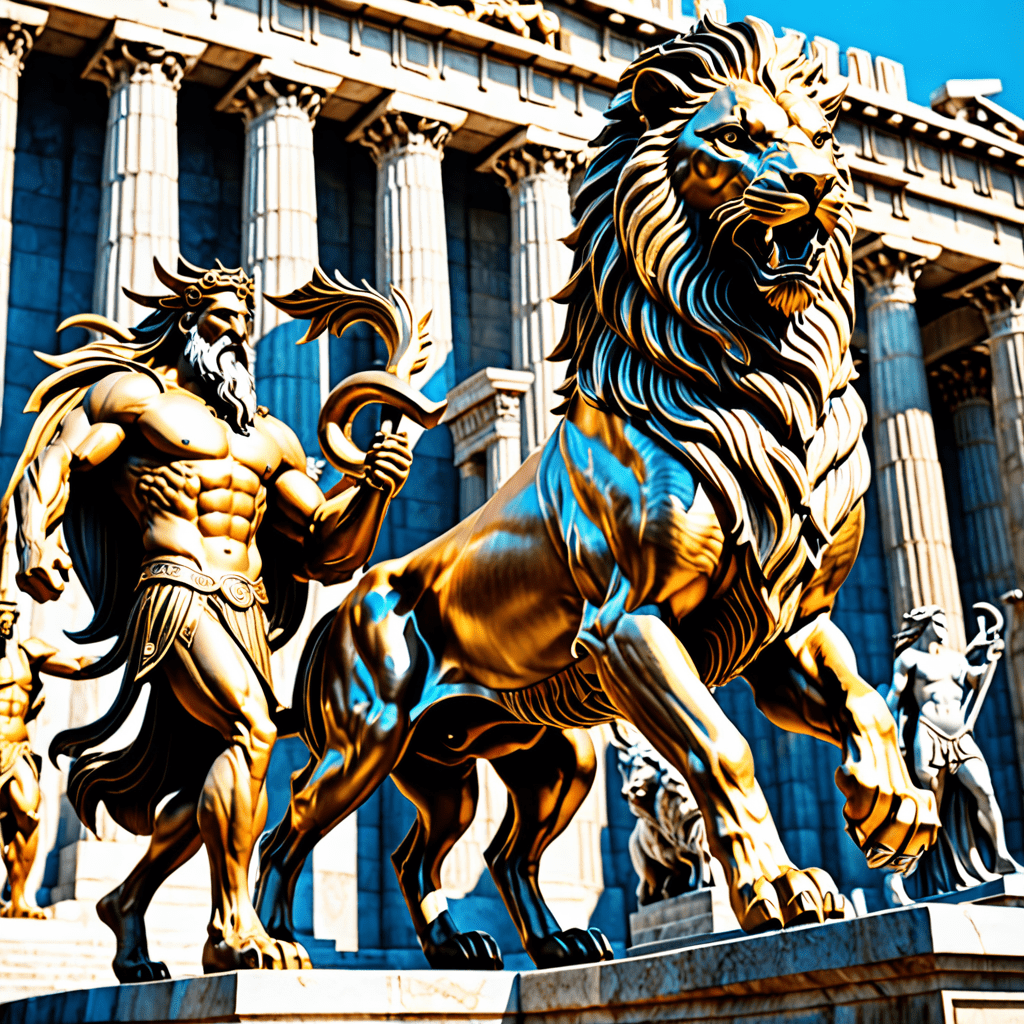War of the Ages: Legendary Battles That Defined Myths
I. Introduction
Legendary battles have captivated human imagination for centuries, serving as pivotal moments in cultural narratives and myths. These battles often transcend mere conflict; they embody the values, struggles, and aspirations of societies. By delving into these epic confrontations, we can gain insights into the collective psyche of cultures throughout history. This article aims to explore notable battles that have shaped mythologies and cultural identities across the globe.
II. The Epic of Gilgamesh: The Battle Against Humbaba
The Epic of Gilgamesh is one of the oldest known works of literature, originating from ancient Mesopotamia. It tells the story of Gilgamesh, a demigod king of Uruk, and his quest for immortality. Central to this epic is the confrontation with Humbaba, the monstrous guardian of the Cedar Forest.
In this battle, Gilgamesh and his companion Enkidu venture into the forest, determined to slay Humbaba and prove their heroism. The struggle against Humbaba symbolizes humanity’s fight against nature and the unknown. It highlights themes of courage, friendship, and the quest for glory, fundamental elements in many mythological narratives.
The impact of this battle on the concept of heroism is profound. It sets a precedent for future heroes who face insurmountable odds, reinforcing the idea that true bravery lies in confronting one’s fears and adversities.
III. The Trojan War: Myth vs. Reality
The Trojan War, a cornerstone of Greek mythology, has been immortalized in texts like Homer’s Iliad. This legendary conflict, believed to have occurred around the 12th century BCE, revolves around the siege of the city of Troy after the abduction of Helen.
Key battles during the war, including the duel between Achilles and Hector, are depicted with heroic grandeur. Homer’s portrayal emphasizes not only the valor of warriors but also the tragic consequences of pride and vengeance.
The aftermath of the Trojan War had lasting ramifications on Greek culture and literature, inspiring countless works and shaping the understanding of heroism, honor, and the human condition. The narrative surrounding the war became a lens through which subsequent generations viewed their own conflicts and aspirations.
IV. The Battle of Ragnarok: The Norse Apocalypse
In Norse mythology, Ragnarok represents the end of the world, characterized by a series of apocalyptic events culminating in a great battle. This conflict involves gods, giants, and various creatures, marking a significant transformation in the cosmos.
Key figures such as Odin, Thor, and Loki play pivotal roles in this final confrontation. The events leading to Ragnarok include treachery, prophecies, and the breaking of oaths, which reflect moral complexities within Norse beliefs.
The significance of death and rebirth in this mythological narrative underscores the cyclical nature of existence, where destruction ultimately leads to renewal. This theme resonates deeply within Norse culture, reinforcing the idea that endings are merely beginnings in disguise.
V. The Battle of Kurukshetra: Dharma and Destiny in the Mahabharata
The Mahabharata, one of the largest epics in world literature, centers around the Battle of Kurukshetra, a war between the Pandavas and Kauravas. This battle is not merely a physical confrontation but a profound exploration of duty (dharma) and righteousness.
Key characters, including Arjuna and Krishna, engage in philosophical dilemmas that reflect the moral complexities of war. Arjuna’s initial reluctance to fight against his kin raises questions about loyalty, justice, and the nature of duty.
The battle serves as a metaphor for the internal struggles individuals face in their lives, emphasizing the importance of adhering to one’s principles and responsibilities. This narrative profoundly influences Indian culture, shaping its philosophical and ethical frameworks.
VI. The Siege of Alesia: A Turning Point in Gallic Resistance
The Siege of Alesia in 52 BCE marks a crucial moment in the Gallic Wars between Julius Caesar and the Gallic tribes. The siege showcases Caesar’s strategic ingenuity as he encircled the fortified city, cutting off supplies and reinforcements.
The tactics employed during the siege, including the construction of fortifications and the use of psychological warfare, highlight the complexities of ancient warfare. Vercingetorix, the Gallic leader, becomes a symbol of resistance and bravery against Roman expansion.
The mythologization of the Siege of Alesia in French history emphasizes themes of national identity and pride, as Vercingetorix is celebrated as a hero who fought valiantly for his people, embodying the spirit of resistance against oppression.
VII. The Battle of Thermopylae: The Stand of the 300
The Battle of Thermopylae in 480 BCE during the Persian Wars epitomizes heroism and sacrifice. King Leonidas of Sparta leads a small force of 300 warriors against the vast Persian army, showcasing unparalleled bravery in the face of overwhelming odds.
The legendary defense at Thermopylae inspires countless narratives about valor and self-sacrifice. The stand of the 300 becomes a symbol of resistance against tyranny, resonating through Western literature and culture as an enduring testament to the human spirit.
This battle’s legacy continues to influence modern perceptions of heroism, underscoring the idea that courage can prevail in the most desperate of circumstances.
VIII. The Battle of Hastings: The Norman Conquest and Its Myths
The Battle of Hastings in 1066 was a pivotal moment in English history, marking the Norman Conquest. The events leading up to the battle stemmed from disputes over the English throne, culminating in a clash between William the Conqueror and King Harold II.
The cultural consequences of the Norman victory reshaped English society, language, and governance. The introduction of Norman rule brought about significant changes, including the establishment of feudalism and the blending of Anglo-Saxon and Norman cultures.
The mythologization of the Battle of Hastings in English history and literature emphasizes themes of conquest, legitimacy, and cultural transformation, reflecting the complexities of power dynamics in medieval Europe.
IX. The Battle of Waterloo: The End of an Era
The Battle of Waterloo in 1815 marked the conclusion of the Napoleonic Wars and the end of Napoleon Bonaparte’s reign. This battle symbolizes the clash between imperial ambition and the collective resistance of European powers.
The significance of Waterloo extends beyond the battlefield, as it reshaped the political landscape of Europe. The defeat of Napoleon led to a reconfiguration of power dynamics, influencing the course of European history for decades.
The legacy of the Battle of Waterloo is enshrined in various cultural narratives, symbolizing the struggle for freedom and the complexities of leadership and governance in an era marked by revolution and change.



